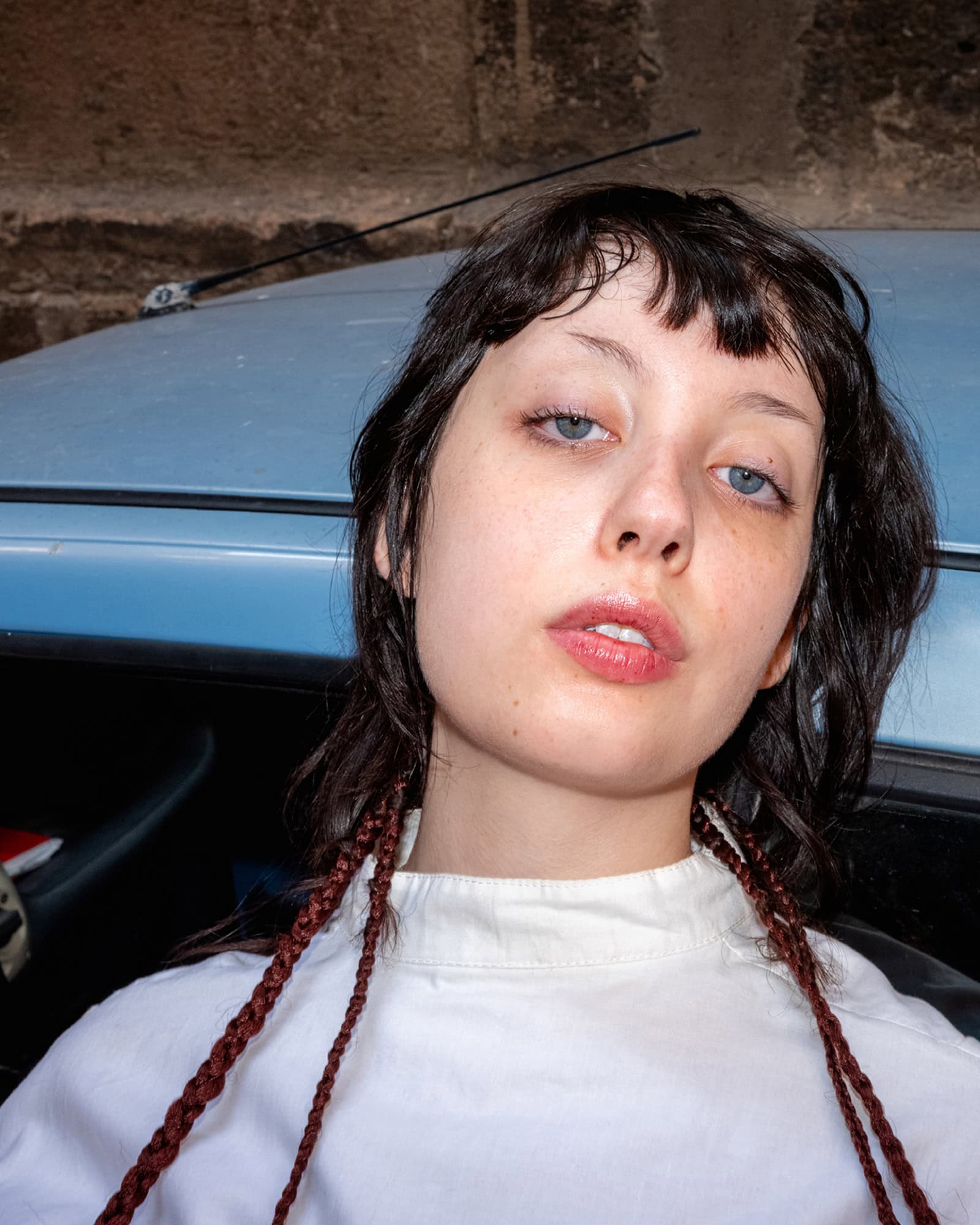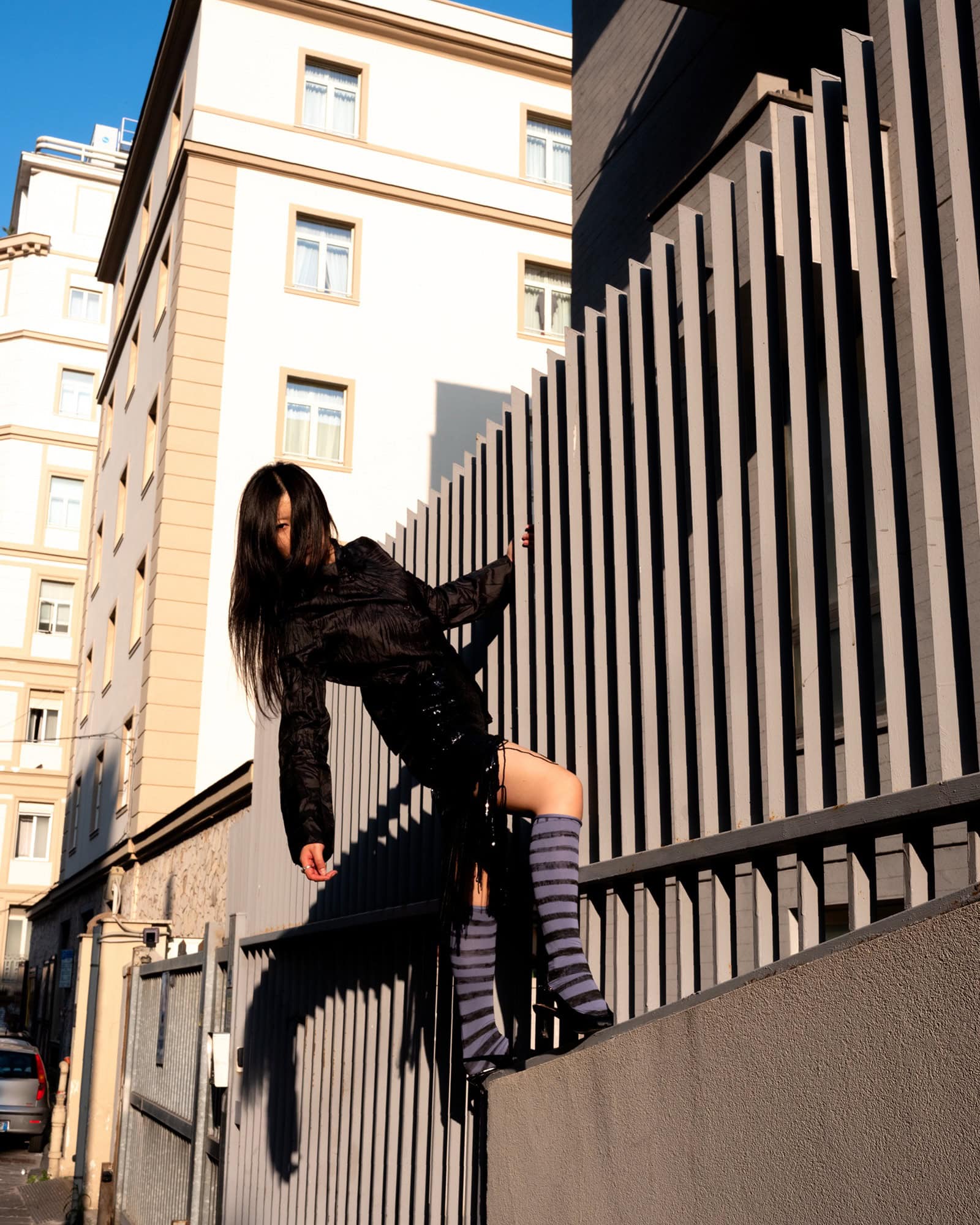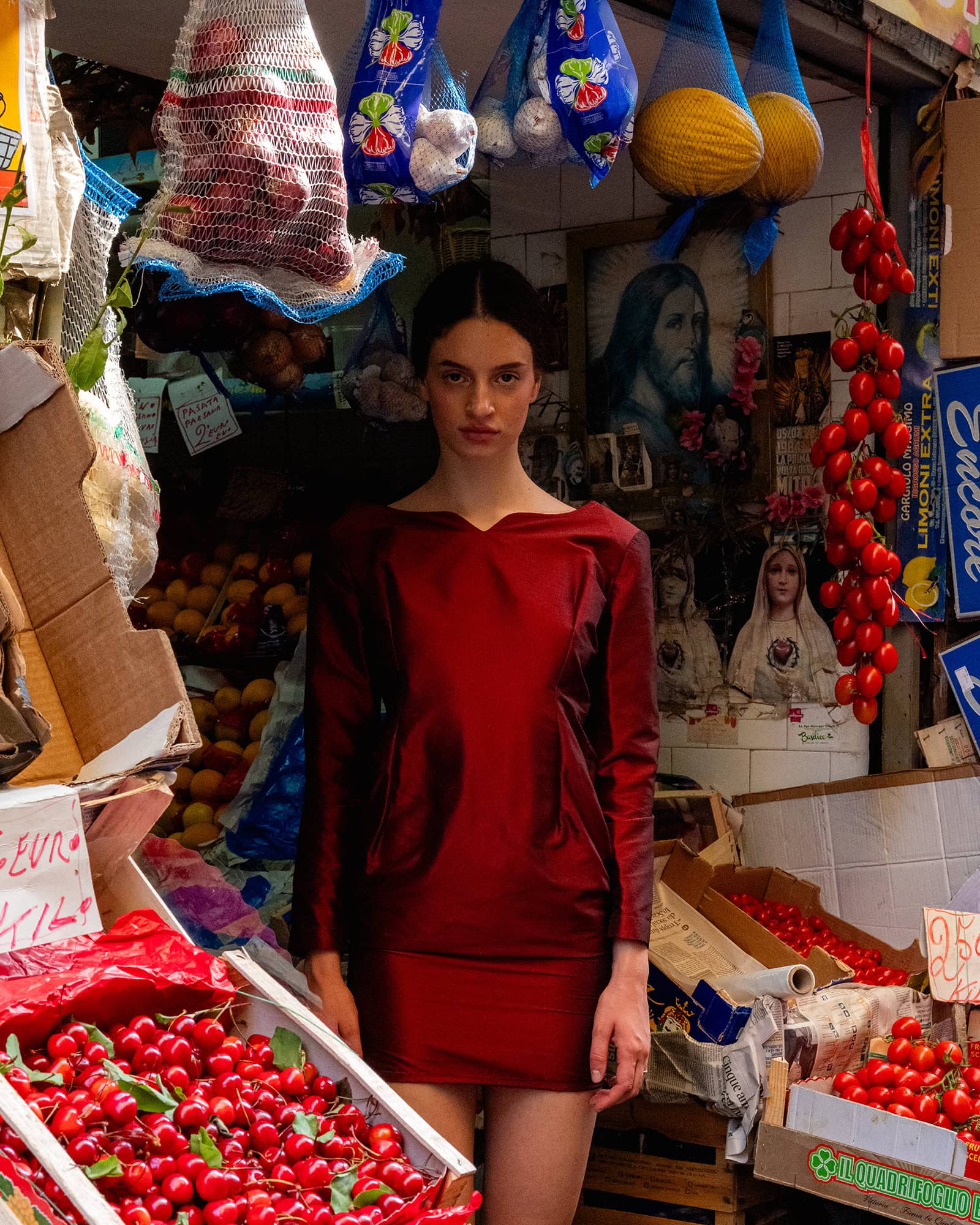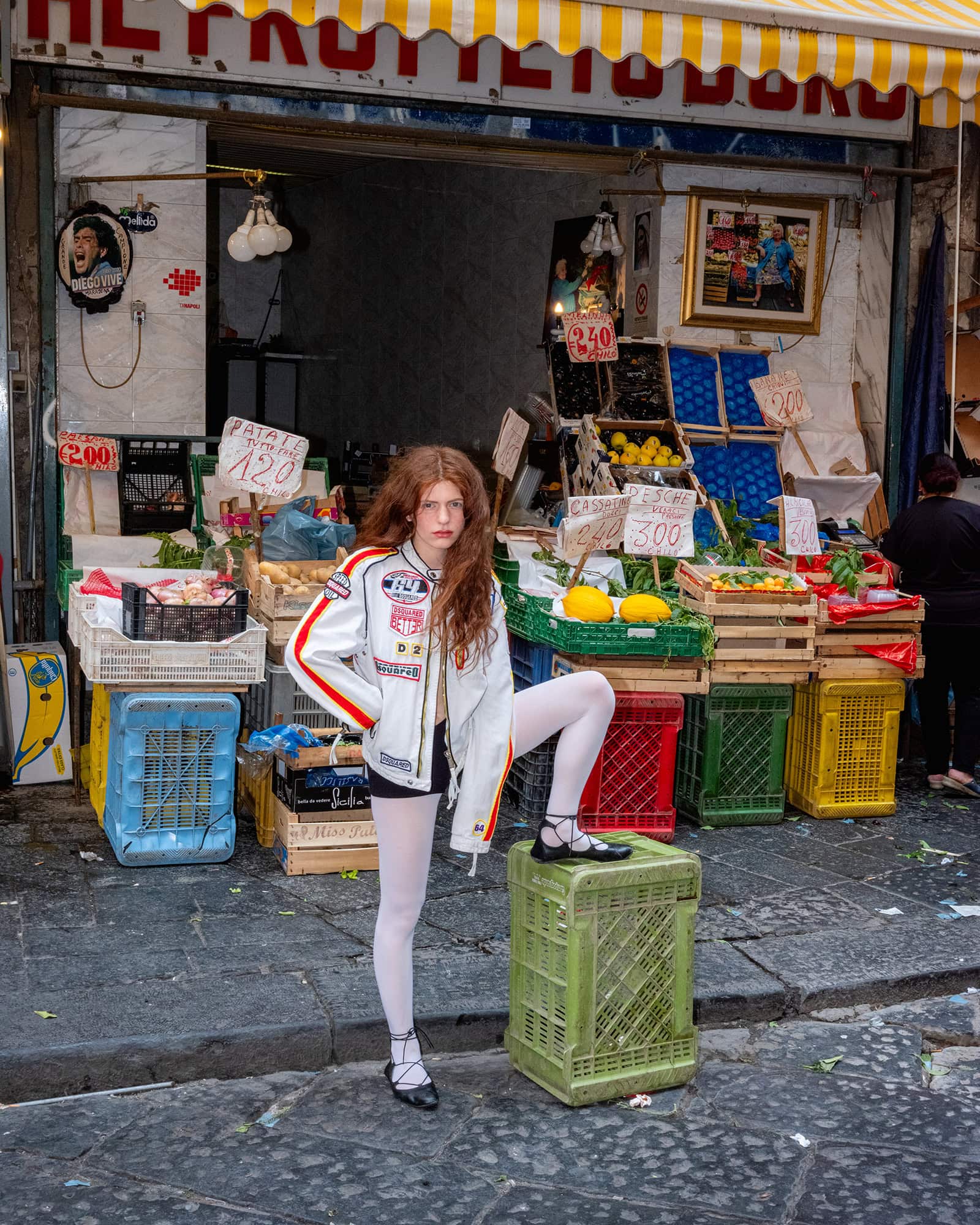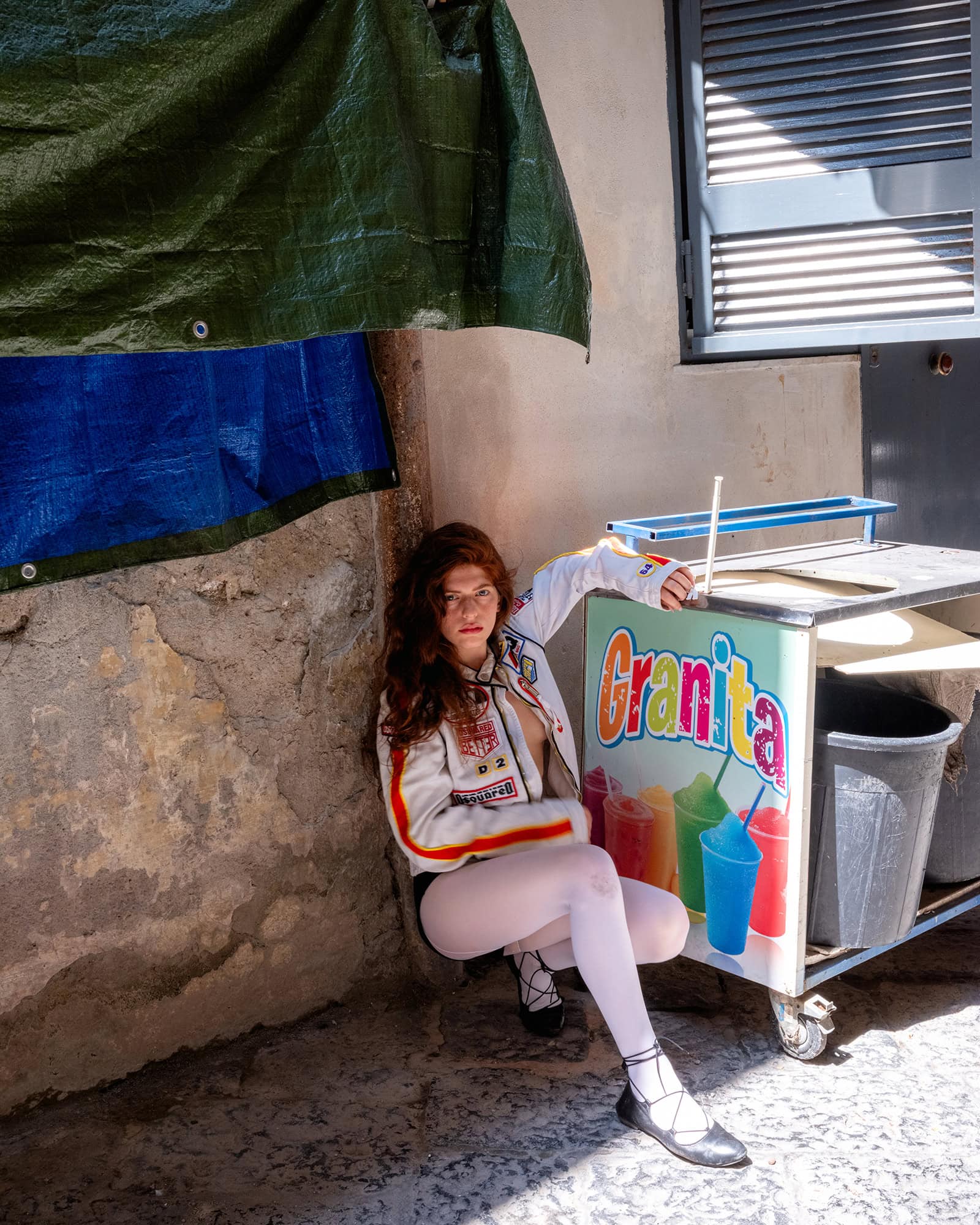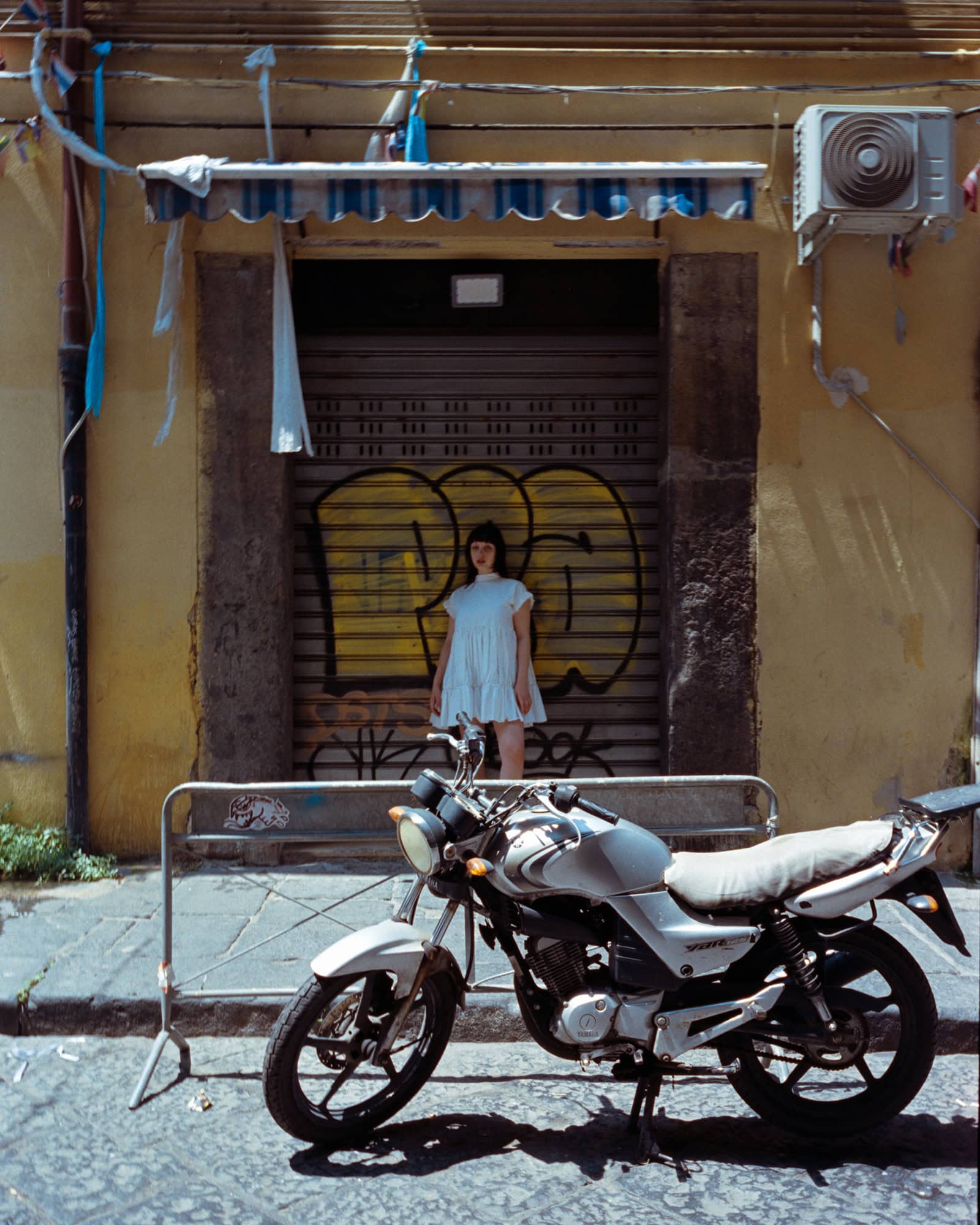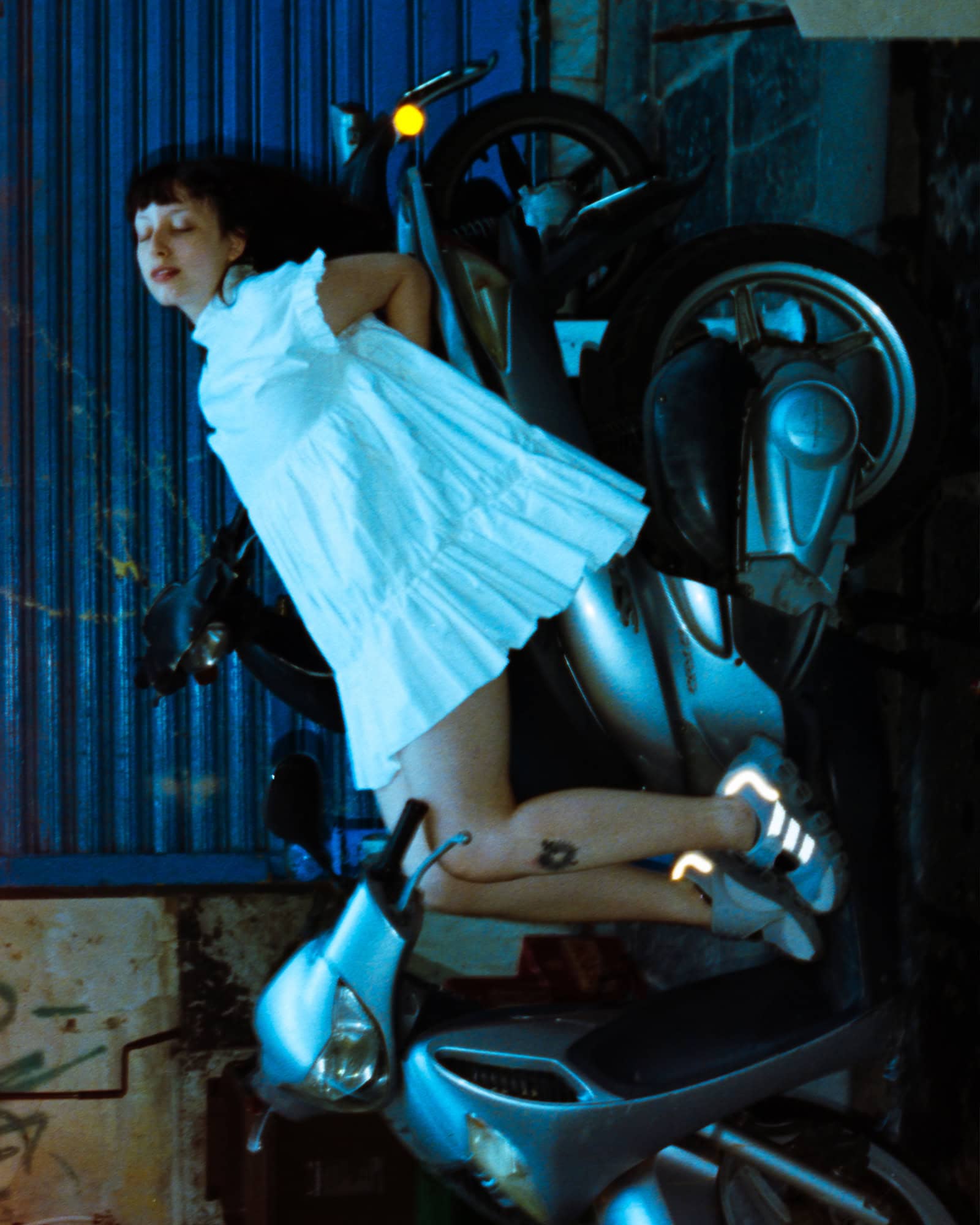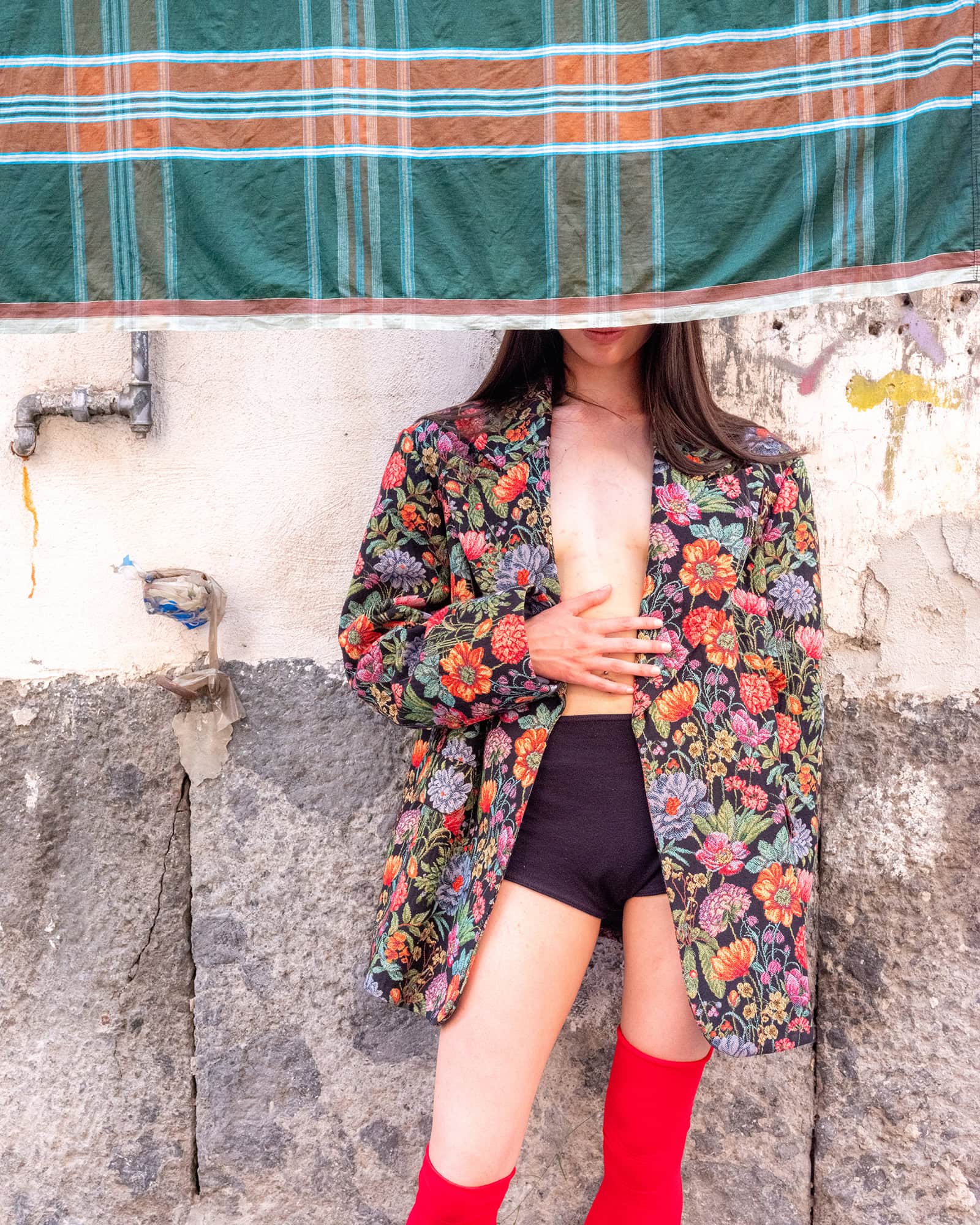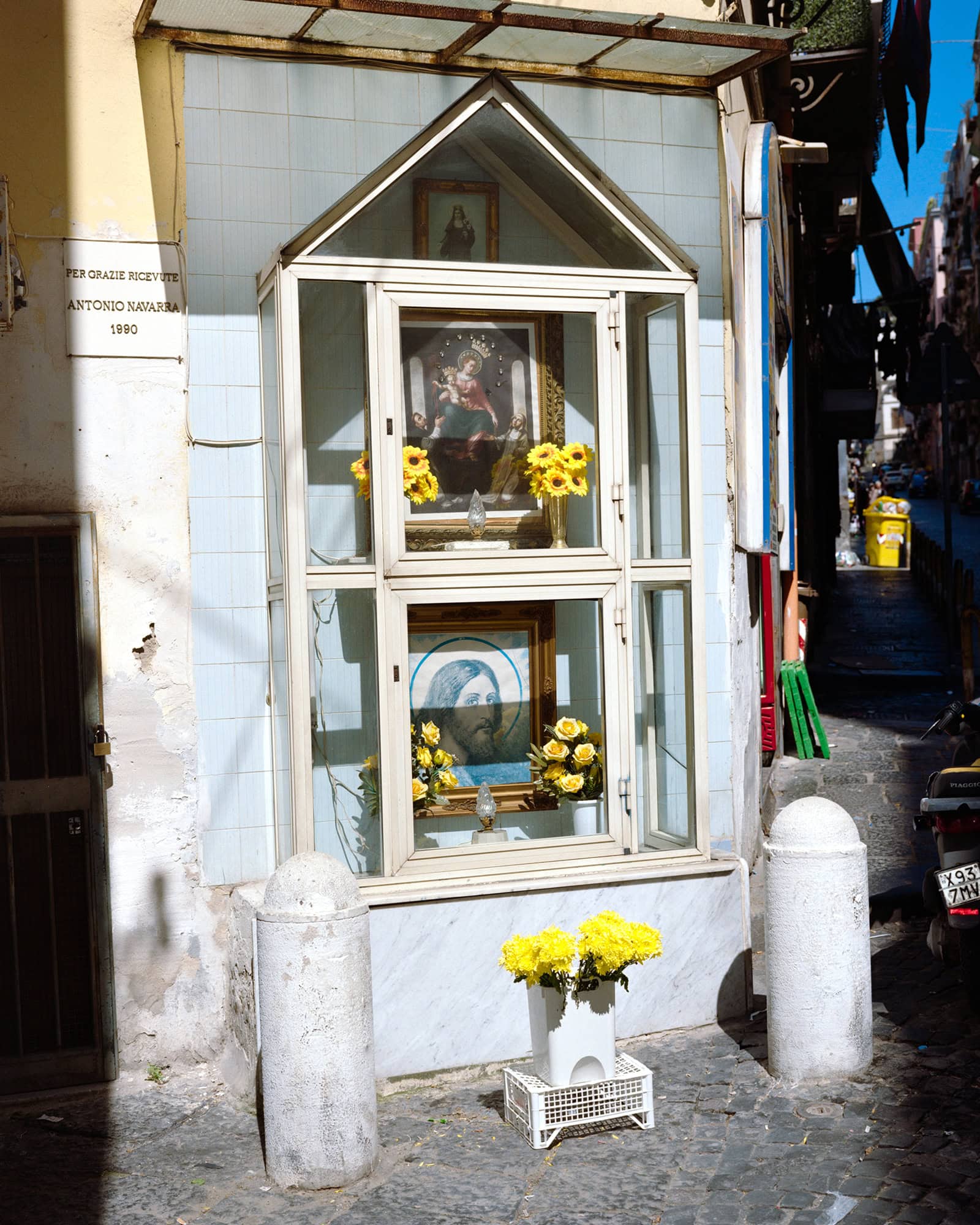In this photographic series, the city is not simply a backdrop, but a living organism that mirrors the subject. The images invite us to unlearn the city as a fixed, physical space and begin to perceive it as an emotional, unstable landscape—filtered through memory, desire, illusion, and inner narrative.
Each frame becomes a threshold between inside and outside, between skin and concrete. The body—often fragmented, camouflaged, or in motion—acts as a sensor: a point of friction between intimate experience and urban architecture. The city, then, is not only built, but inhabited and rewritten through the gaze.
One of the most emblematic photographs of the series depicts a human figure standing against a worn wall, partially concealed by a striped curtain that cuts across their face. The body appears in an ambiguous pose—somewhere between self-protection and offering—wearing a floral jacket that evokes a sense of nature overlaid onto urban decay. Bright red knee-high socks break the muted palette, introducing a performative tension. Identity here is partial, elusive: there is no face, yet presence is unmistakable. The body, both clothed and exposed, is at once protected and vulnerable, much like the space that surrounds it.
The series maps out a psychological geography of isolation and interaction. It explores minimal gestures, reflected gazes, interrupted crossings. Fascination lies not in the monumental, but in the cracks. Not in the expanse of the urban landscape, but in the porosity of its edges: blind faucets, stained walls, curtains as mobile domestic borders.
The approach rejects documentary rhetoric in favor of an intimate, almost dreamlike vision of contemporary cities. Here, urban space becomes a projection of the subconscious—a territory navigable only through the body. Ultimately, A Hidden Ground invites us to reconsider the city not as what is seen, but as what is felt: a place continuously traversed by presences, absences, and untold stories.
